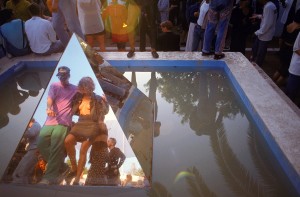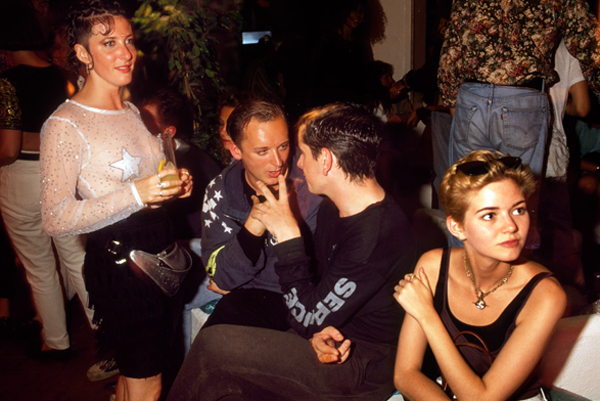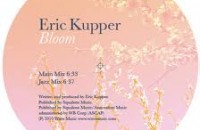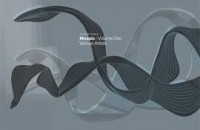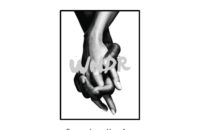‘Ecstasy Island’: Dave Swindells’ photos show Ibiza at the time when its music and drug of choice inspired Britain’s biggest cultural phenomenon since punk. However vibrant the club scenes in London, Berlin or Bucharest may be, during the summer season all eyes turn to Ibiza.
It’s been like this for decades: Ibiza had pioneering venues like Pacha, Ku (now Privilege) and Amnesia which were superclubs 15 years before the term was commonly used in Britain, but in London in the mid-1980s most of us were barely aware of it. Unless you were gay or part of the jetset glitterati it’s unlikely that you’d have been familiar with what was developing on the island. Ku was already the world’s largest club venue, with a capacity of 7,000, but incredibly, in 1989 neither Ku nor Amnesia had roofs over their dance floors, so that the locals could barely sleep throughout the summer. At Amnesia only a silk parachute came between the dancers and mid-night electric storms, or the morning sun…
‘Spirit of Ibiza ’89’ documents Ibiza in the summer of 1989, when Ku and Amnesia were still open-air parties, when Pacha was less than half the size it is now, and when a new wave of British clubbers and club ‘workers’ joined the locals going to Café del Mar in San Antonio to watch the sun setting into the sea.
Spirit of Ibiza ’89 is a homage to this special time in the development of Ibiza, and to the impact and influence that Ibiza had in the UK, where the combination of ‘Balearic Beats’, acid house and ecstasy helped to inspire a huge cultural shift during the so-called ‘summers of love’ of 1988 and 1989.
Dave Swindells took many of the defining images of these rapidly-changing scenes, by concentrating his lens on the people whose lives were being changed by the music, the clubs and the drugs, as well as those, like Danny Rampling or Boy George, who were proactively spreading underground dance culture.
Swindells had been the Nightlife Editor at London’s Time Out for three years, so he knew all the principal DJs and many clubbers too. He’d photographed London’s nightlife since 1984 for i-D and Time Out, so he and writer Alix Sharkey were commissioned by 20:20 magazine (a sister publication to Time Out) to report on what was special about this small Spanish island which had so profoundly influenced music and clubs in the UK.
In the spring of 2011 Swindells teamed up with Ernesto Leal and Lisa Loud – herself one of the original Ibiza club kids who went on to become a world-renowned DJ – of the Our History project* (www.culthist.com) to produce an exhibition of these photographs at The Printspace on Kingsland Road in London (www.theprintspace.co.uk). The intention was always to take the photos back to Ibiza, back to the scene of that special time, as it were, with an exhibition of these photos featuring as part of the International Music Summit in Ibiza Town in May. Throughout the summer these photos are being shown at the beautiful Hotel Es Vive in Playa d’en Bossa, Ibiza. (www.hotelesvive.com)
This exhibition inspired the book you hold in your hands. From hundreds of slides taken during a hectic week in June 1989 Swindells and book designer Jason Kedgley selected images which showed that often (but by no means always) the British dressed down and looked distinctly different to their sartorially-sophisticated cosmopolitan counterparts on Ibiza. But these Brits were so full of enthusiasm, energy, euphoria (and other words beginning with an E) that Ibizan club promoters wanted them on the dance floors anyway.
It also shows that in 1989 Ibiza was still very different to London. The clubs were far bigger and more extravagant than London venues yet still retained a Spanish core, before the hordes of British, German and Italian clubbers invaded the island. It was also long before programmes like Ibiza Uncovered or Balearic Babes, long before Radio 1 began broadcasting from the Café del Mar, long before Ryanair and Easyjet made flying as cheap as chips and the internet made everything everywhere the same, accessible to everyone at the same moment.
As the introduction to the book suggests, though, in spite of the homogenisation of youth culture which has intensified since the World Wide Web captured us all in its silky threads, Ibiza in 2011 is not an entirely different world to that shown in the book. Some of the fashionable ‘looks’ seen in ‘Spirit of Ibiza ’89’ would fit in perfectly on a hot night outside Café del Mar (or Dalston Superstore) in 2011. The style and devil-may-care exuberance of open-air clubbing in ’89 was born again when DC10, the Ibizan club next to the airport, came to fame after 2002.
For further information please contact
Ernesto Leal ernestoleal.01@googlemail.com
& Juan Leal at Juan@culthist.com
Dave Swindells daveswindells009@gmail.com
Book Launched: Hotel Es Vive, Ibiza: 18th/19th September 2011
UK Launch: RED Gallery, London: 6th October 2011
*{ourhistory} uses archival material and multimedia exhibitions to map and display the often uncharted history and achievements of people working within the creative media, with particular emphasis on the dynamic evolution of the nightlife scene

